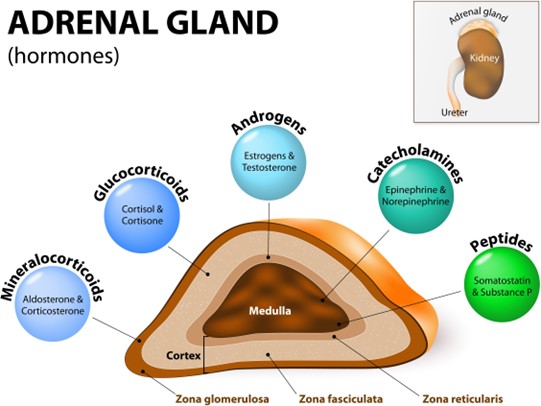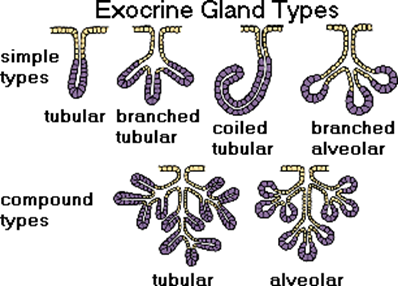A hormone that the adrenal medulla secretes is:
Mineralocorticoid.
Epinephrine.
Glucocorticoid.
Aldosterone.
The Correct Answer is B

Epinephrine, also known as adrenaline, is a hormone that the adrenal medulla secretes in response to stress or low blood sugar levels.
It helps the body react to stress by increasing blood pressure, heart rate, oxygen delivery to muscles, and blood sugar levels.
Choice A is wrong because mineralocorticoids are hormones that the adrenal cortex secretes, not the adrenal medulla.
They help regulate the balance of sodium and potassium in the body.
Choice C is wrong because glucocorticoids are also hormones that the adrenal cortex secretes, not the adrenal medulla.
They help control the body’s use of fats, proteins, and carbohydrates, suppress inflammation, and regulate blood pressure and blood sugar.
Choice D is wrong because aldosterone is a specific type of mineralocorticoid that the adrenal cortex secretes, not the adrenal medulla.
It helps regulate the balance of sodium and water in the body.
Nursing Test Bank
Naxlex Comprehensive Predictor Exams
Related Questions
Correct Answer is D
Explanation
Exocrine glands secrete through ducts or tubes to the body’s exterior.

For example, sweat glands, salivary glands, and liver are exocrine glands.
Choice A is wrong because exocrine glands do not only secrete salts, but also other substances such as enzymes, mucus, and sebum.
Choice B is wrong because exocrine glands do not secrete hormones at all.
Hormones are secreted by endocrine glands, which are ductless glands that release their products directly into the bloodstream.
Choice C is wrong because exocrine glands do not secrete into the bloodstream, but onto an epithelial surface such as the skin or the gastrointestinal tract.
Only endocrine glands secrete into the bloodstream.
Correct Answer is B
Explanation
Naturally acquired active immunity is the type of resistance that is acquired as a result of developing a disease.
This means that the immune system produces antibodies to fight off the infection and remembers the pathogen for future protection.
This type of immunity is long-lasting and sometimes life-long.
Choice A is wrong because naturally acquired passive immunity is the type of resistance that is acquired when a person receives antibodies from another source, such as from the mother through the placenta or breast milk.
This type of immunity is temporary and lasts only for a few weeks or months.
Choice C is wrong because artificially acquired active immunity is the type of resistance that is acquired when a person receives a vaccine that contains a weakened or killed form of the disease organism.
This triggers the immune system to produce antibodies and memory cells without causing the actual disease.
This type of immunity can last for years or decades, depending on the vaccine.
Choice D is wrong because artificially acquired passive immunity is the type of resistance that is acquired when a person receives antibody-containing blood products, such as immune globulin, that provide immediate protection from a specific disease.
This type of immunity is also temporary and lasts only for a few weeks or months.
Whether you are a student looking to ace your exams or a practicing nurse seeking to enhance your expertise , our nursing education contents will empower you with the confidence and competence to make a difference in the lives of patients and become a respected leader in the healthcare field.
Visit Naxlex, invest in your future and unlock endless possibilities with our unparalleled nursing education contents today
Report Wrong Answer on the Current Question
Do you disagree with the answer? If yes, what is your expected answer? Explain.
Kindly be descriptive with the issue you are facing.
